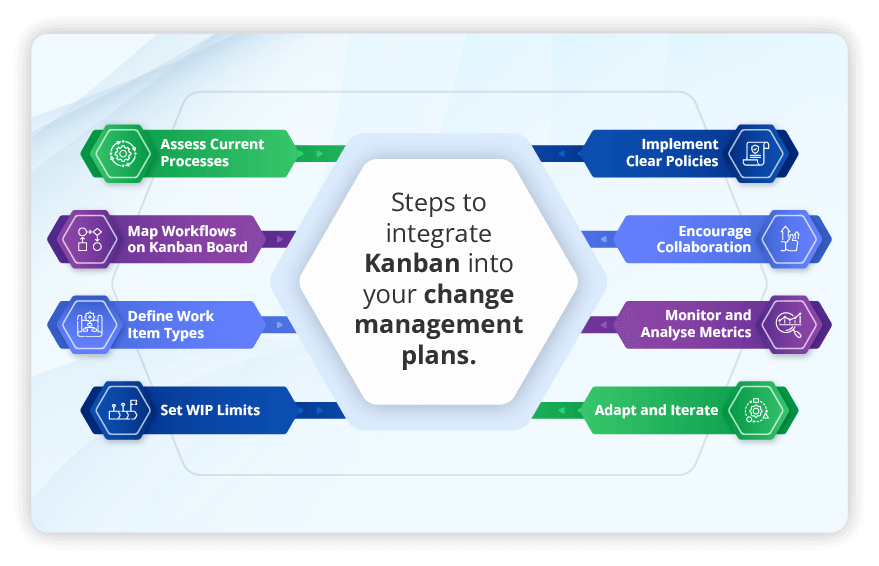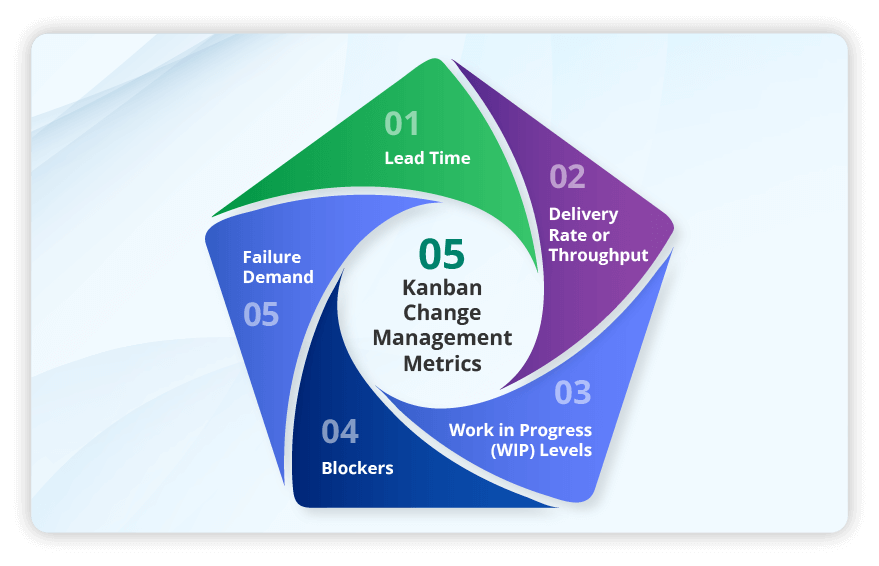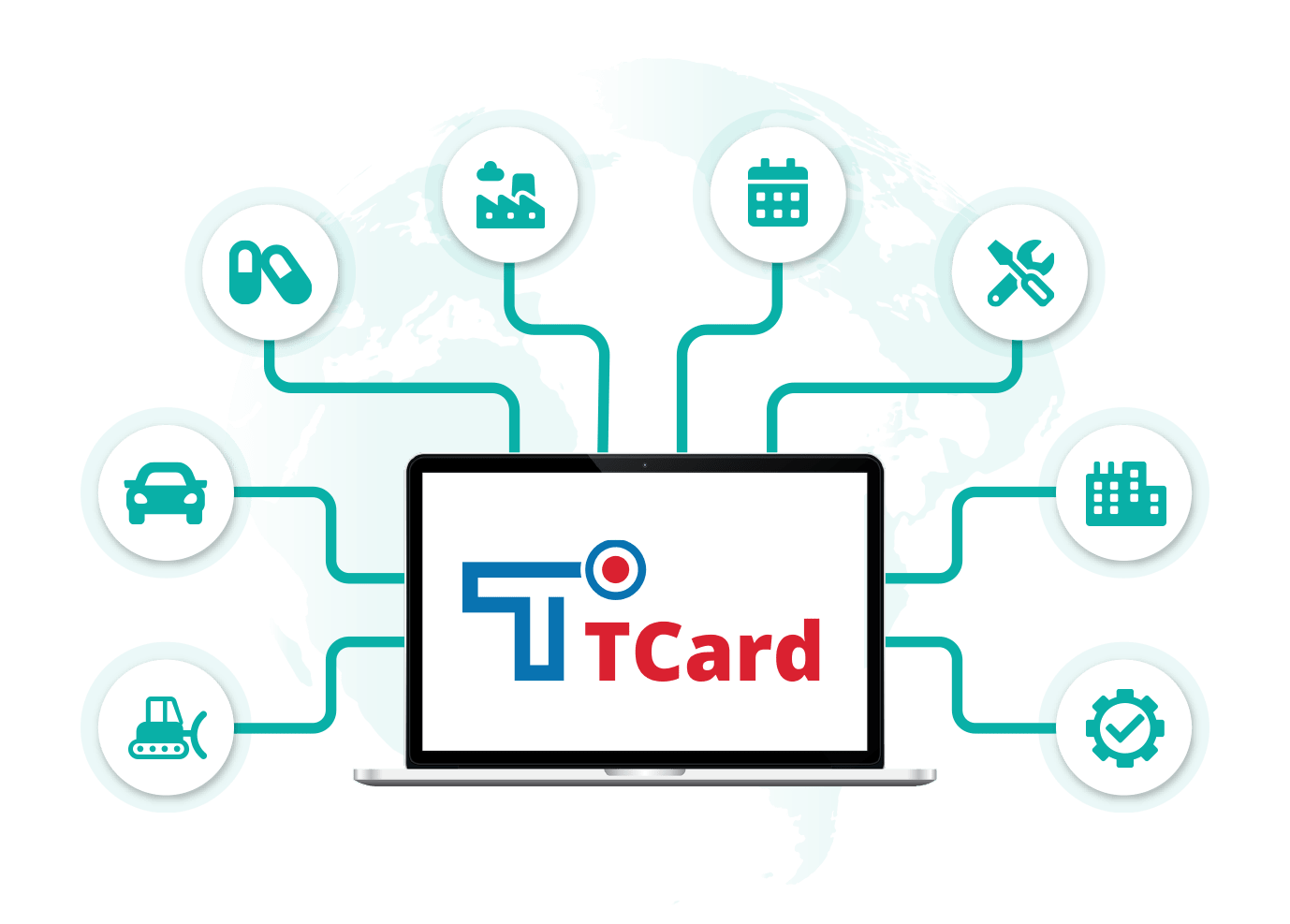Kanban in Change Management Processes
Implementing Kanban in your change management plans can visually manage your workflow and enhance collaboration.
Start Free Trial Watch VideoContents
- What is Change Management?
- How does the Kanban approach relate to Change Management?
- Key benefits of implementing Kanban board in Change Management Processes
- How to implement Change Management using Kanban?
- Best practices for integrating Kanban in Change Management Strategies.
- Kanban Change Management vs Traditional Change Management approaches.
- How to create a Change Management template in the Kanban System?
- Five Kanban Change Management Metrics you should consider
- How to overcome common challenges in implementing Kanban for Change Management?
- How to apply Kanban Change Management Principles in traditional Project Management methodologies?
- How does Kanban support continuous improvement in Change Management processes?
- Example of successful Kanban implementation for Change Management
- How to check your ROI for Change Management with Kanban?
What is Change Management?
Change Management is a structured approach to transitioning individuals, teams, and organisations from their current state to a desired future state. It involves a set of processes to ensure changes are implemented smoothly and efficiently, minimising resistance and maximising benefits. The change management process involves planning, communication, and engagement to facilitate organisational transformation. When implemented systematically, change management strategies facilitate a seamless transition and help individuals and teams quickly adapt to the changing organisational situation, promoting a culture of flexibility and resilience.
How does the Kanban approach relate to Change Management?
The Kanban approach is closely aligned with change management, providing a dynamic and visual framework to manage work processes efficiently. Kanban's emphasis on visualising workflow, limiting Work in Progress (WIP), and managing flow aligns seamlessly with change management principles. By visualising change management tasks on a Kanban board, teams gain transparency into the progress and status of initiatives. Limiting WIP ensures a controlled pace of change, preventing overload and allowing teams to focus on quality. Managing flow enables the continuous improvement of change management processes, identifying bottlenecks and enhancing overall efficiency. With adaptability and emphasis on collaboration, the Kanban approach offers a valuable methodology for implementing successful change management practices.
Kanban Change Management principles include:
- Start with what you do now: Begin by understanding and acknowledging the current state of your processes. Identify existing workflows, roles, and practices before initiating any change efforts.
- Agree to pursue incremental change (Evolutionary Change): Embrace a step-by-step approach to change, promoting gradual and incremental improvements. This principle encourages adapting to changes progressively, allowing teams to adjust without overwhelming disruptions.
- Encourage leadership at all organisational levels: Empower individuals at every level to demonstrate leadership. In Kanban change management, leadership is not confined to a specific role but is distributed across the organisation. Encouraging acts of leadership fosters a collaborative and proactive environment, supporting successful change initiatives.
Key benefits of implementing Kanban board in Change Management Processes
- Real-time Task Status Updates: With Kanban, teams can update task statuses in real-time, providing instant visibility into the progress of change initiatives. This fosters improved communication and helps teams stay aligned with project timelines.
- Efficient Work Prioritisation: Kanban boards facilitate the prioritisation of tasks, enabling teams to focus on high-priority items first. This ensures that critical aspects of change management are addressed promptly and reduces bottlenecks.
- Minimising Work Overload: By limiting Work in Progress (WIP), Kanban helps prevent teams from simultaneously taking on too many tasks. This restriction fosters a balanced workload, preventing overwhelm and ensuring that each task receives the required attention.
- Identifying Bottlenecks and Delays: The visual nature of Kanban makes it easy to identify bottlenecks and delays in the change management process. This enables teams to address issues promptly, keeping the workflow smooth and efficient.
- Enhancing Collaboration: Kanban fosters collaboration through a shared platform that enables team members to exchange updates collectively. This collaborative environment promotes a sense of unity, which is especially important in change management, where cross-functional cooperation is necessary.
- Promoting ongoing enhancement: Kanban cultivates a culture of continuous improvement by consistently reviewing and refining processes. Teams can analyse their performance, identify areas for enhancement, and implement changes to optimise the change management workflow over time.
How to implement Change Management using Kanban?

Implementing Kanban in change management is an easy process for organisations to achieve efficiency. Let's discuss the eight simple steps you should take to integrate Kanban into your change management plans.
- Assess Current Processes: Begin by assessing your existing change management processes. Identify workflows, stakeholders, and pain points. It sets the foundation for understanding how Kanban can be integrated to enhance change management processes.
- Map Workflows on Kanban Board: Create a Kanban board to map out the stages of your change management workflows. Visualise tasks, approvals, and transitions to provide a clear overview of the entire process. This visual representation facilitates better coordination and understanding.
- Define Work Item Types: Categorise change management tasks into distinct item types (e.g., requests, approvals, implementation). This classification helps set up different lanes on the Kanban board, ensuring organised and structured management of various work items.
- Set WIP Limits: Establish Work in Progress (WIP) limits for each stage of the change management process. WIP limits prevent overloading and maintain a steady workflow, enabling teams to focus on completing tasks efficiently.
- Implement Clear Policies: Define explicit policies for task progression on the Kanban board. Clearly outline criteria for moving tasks through different stages, ensuring consistent decision-making and providing a standardised approach to change management.
- Encourage Collaboration: Leverage the Kanban board as a collaborative platform. Encourage team members to actively communicate, update task statuses, and discuss potential challenges. This enhances transparency and ensures everyone is aligned throughout the change management process.
- Monitor and Analyse Metrics: Regularly monitor Kanban metrics such as lead time, cycle time, and WIP. Analyse these metrics to identify areas for improvement, optimise processes, and ensure that change management objectives are met efficiently.
- Adapt and Iterate: Embrace an iterative approach. Periodically review the effectiveness of your Kanban-based change management processes. Gather feedback, identify opportunities for enhancement, and make adjustments to optimise workflows continuously.
Best practices for integrating Kanban in Change Management Strategies.
- Establish Clear Policies and Work Item Types: Define explicit policies for each stage of the Kanban process and categorise work items appropriately. Clear policies provide guidelines for task progression, ensuring consistency and alignment with change management objectives.
- Encourage Collaborative Decision-Making: Foster a collaborative environment by involving team members in decision-making processes. Engage in regular meetings to discuss progress, challenges, and potential improvements. This contributes to decision-making, enhancing collective ownership of change management plans.
- Implement Feedback Loops and Regular Reviews: Establish feedback loops and conduct regular reviews to assess the effectiveness of Kanban in your Change Management practices. Encourage open communication and gather insights from team members to identify areas for improvement.
Kanban Change Management vs Traditional Change Management approaches.
Traditional change management approaches, including developmental, transitional, and transformational models, follow a structured and sequential process. The developmental change focuses on incremental improvements, transitional change navigates through a planned adjustment period, and transformational change entails a radical organisational shift. These approaches often involve extensive planning, communication, and resistance management. In contrast, Kanban change management is rooted in continuous improvement principles. It emphasises visualising work, limiting Work in Progress, and optimising flow. Kanban fosters adaptive, evolutionary change by encouraging teams to respond to feedback and manage processes in real-time, promoting a more dynamic and responsive approach to organisational transformation.
How to create a Change Management template in the Kanban System?
To make a change management plan template in a Kanban board, follow these steps:
- Define Workflow Stages: Identify key stages in your change management process, such as Request, Analysis, Approval, Implementation, and Review.
- Create Kanban Columns: Set up columns on your Kanban board to represent each workflow stage, visually representing the change lifecycle.
- Design the Kanban Cards: Each change request becomes a Kanban card, with essential details like change description, requester, priority, and due date.
- Assign Responsibilities: Assign responsible individuals or teams to each card to ensure clear accountability throughout the change process.
- Prioritise each Task: Use colour-coding or other visual cues to prioritise change requests based on urgency or impact.
- Set WIP Limits: Implement Work In Progress (WIP) limits for each stage to prevent bottlenecks and maintain a manageable workload.
- Choose Communication Channels: Establish clear communication channels within the Kanban cards or linked documentation to facilitate collaboration and information sharing.
- Review and Analyse the Metrics: Include a "Review" column to assess completed changes and integrate metrics to track Key Performance Indicators (KPIs), allowing continuous improvement.
- Document the Processes: Attach relevant documentation, approvals, and post-implementation reviews directly to the Kanban cards for a comprehensive change history.
- Establish a Feedback Loop: Incorporate a feedback loop within the Kanban board to gather stakeholder insights and incorporate lessons learned into future change management processes.
Five Kanban Change Management Metrics you should consider

By monitoring Kanban change management metrics, teams can comprehensively view their process, identify bottlenecks, and improve their delivery capabilities.
- Lead Time: Lead time measures the duration from initiating a change request to its completion. It provides insight into the efficiency of the change process.
- Delivery Rate or Throughput: Throughput represents the number of change requests successfully delivered within a specific timeframe, indicating the team's capacity and performance.
- Work in Progress (WIP) Levels: WIP levels set limits on the number of change requests in progress simultaneously, preventing overloading and maintaining a steady workflow.
- Blockers: Blockers refer to impediments or obstacles hindering the progress of change requests. Identifying and resolving blockers is crucial for maintaining flow.
- Failure Demand: Failure demand involves the instances where a change request fails to meet the intended goal, providing insights into areas for improvement.
How to overcome common challenges in implementing Kanban for Change Management?
- Resistance to Change: Address resistance by fostering a culture of transparency and communication, involving team members in the Kanban implementation process, and highlighting the benefits of increased visibility and efficiency.
- Inadequate Training: Overcome inadequate training by providing comprehensive education on Kanban principles and practices, ensuring team members have the necessary skills to use the Kanban system effectively.
- Lack of Initial Buy-In: Gain buy-in by clearly communicating the advantages of Kanban, aligning it with organisational goals, and demonstrating how Kanban addresses specific pain points in the change management process.
- Poorly Defined WIP Limits: Establish well-defined Work In Progress (WIP) limits to prevent overloading teams and maintain a steady workflow, addressing challenges related to workload management and bottlenecks.
- Inconsistent Process Adherence: Ensure consistent process adherence by periodically reviewing and refining Kanban processes, addressing deviations, and reinforcing the importance of following the established workflow.
- Lack of Leadership Support: Secure senior management support by demonstrating the positive impact of Kanban on change management outcomes, aligning it with strategic goals, and presenting evidence of successful implementations.
- Failure to Monitor and Analyse Metrics: Overcome challenges related to metric analysis by regularly monitoring key Kanban metrics such as lead time, throughput, and WIP levels and using the insights gained to identify areas for improvement.
How to apply Kanban Change Management Principles in traditional Project Management methodologies?
Following these guidelines, you could easily align Kanban change management principles with traditional project management methodologies:
- Using cards to denote change requests, incorporate visual boards to represent the project workflow stages.
- Define and limit Work in Progress (WIP) to avoid bottlenecks and maintain steady flow.
- Assign owners to each change card for accountability and facilitate transparent communication.
- Implement feedback loops and regular reviews to promote continuous improvement.
- Emphasise lead time and cycle time metrics to enhance efficiency.
How does Kanban support continuous improvement in Change Management processes?
Kanban supports continuous improvement in change management processes through its visual, feedback-driven approach. By visualising the change workflow on a Kanban board, teams gain transparency into the process, identifying bottlenecks and inefficiencies. Regular feedback loops and metrics such as lead time and cycle time provide insights for refining and optimising workflows. The emphasis on limiting Work in Progress (WIP) ensures a focus on completing tasks before taking on new ones, preventing overburdening and promoting a more efficient, responsive system. Through this iterative and data-driven approach, Kanban enables teams to adapt, learn, and continuously enhance their Change Management processes.
Example of successful Kanban implementation for Change Management
Kanban's versatile application in Change Management transcends industries, from IT to Manufacturing. It facilitates real-time monitoring, enabling Finance, Healthcare, Pharma, Construction, and HVAC teams to adapt to changing priorities swiftly. Additionally, Kanban's flexibility promotes continuous improvement, making it a powerful tool for managing dynamic and evolving change management practices across diverse industries.
Let's align the steps for implementing Kanban in Change Management with the inventory management process in the Automobile industry.
- Define Workflow Stages: Clearly define stages such as "Raw Material Ordering," "Production Scheduling," and "Distribution" as key workflow steps on the Kanban board.
- Create Kanban Columns: Establish columns for "Material Ordering," "Scheduling," and "Distribution" to visualise and track change requests at each stage as the cards move across the columns.
- Design the Kanban cards: Create Kanban cards for change requests, specifying details like quantity adjustments, priority changes, and scheduling modifications for better visibility and tracking.
- Assign the responsible team member: Designate responsible teams for "Material Ordering," "Scheduling," and "Distribution" to streamline decision-making and accountability.
- Ensure task Prioritisation: Colour-code cards to signify priority, helping teams in the inventory process identify and address urgent changes swiftly.
- Establish the WIP Limits: Set WIP limits for "Material Ordering," "Scheduling," and "Distribution" to ensure smooth flow and avoid overburdening teams.
- Establish Communication Channels: Embed communication channels within Kanban cards, allowing teams to discuss and document changes, fostering collaboration and information sharing relating to inventory levels, storage and usage.
- Review and Analyse the Metrics: Introduce a "Review" column on the Kanban board to evaluate the success of changes in improving inventory processes, utilising metrics like lead time and cycle time.
- Document the processes: Encourage teams to attach documentation related to material specifications, scheduling approvals, and distribution reviews directly to Kanban cards for thorough documentation.
- Set Feedback Loop: Implement a feedback loop for continuous improvement, allowing teams to reflect on challenges and successes in managing changes in inventory processes.
How to check your ROI for Change Management with Kanban?
To analyse the Return on Investment (ROI) for change management with Kanban,
- Quantify the time and resource savings achieved through improved efficiency, reduced lead times, and minimise disruptions.
- Assess the impact on Key Performance Indicators, such as throughput and cycle time, to gauge productivity enhancements.
- Consider factors in the cost savings derived from optimised resource allocation and reduced rework.
- Check for qualitative benefits, such as improved collaboration and stakeholder satisfaction.
By comparing these gains against the initial investment in Kanban implementation, organisations can comprehensively evaluate the ROI, demonstrating the tangible and intangible value brought about by applying Kanban principles to change management processes.

